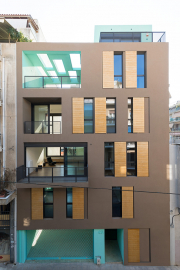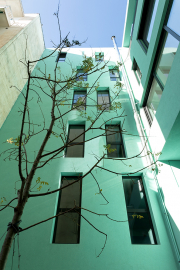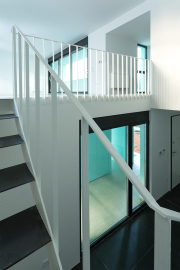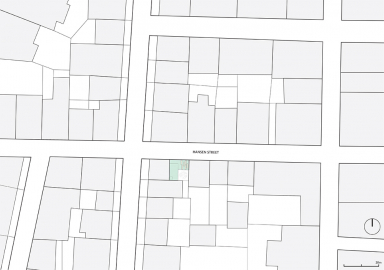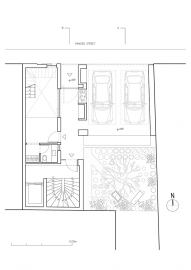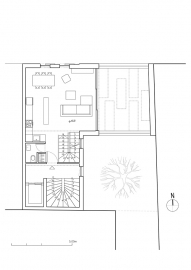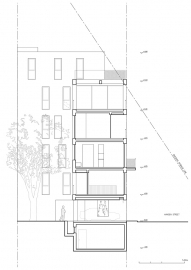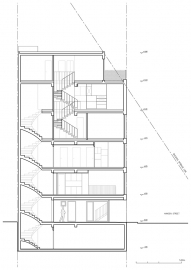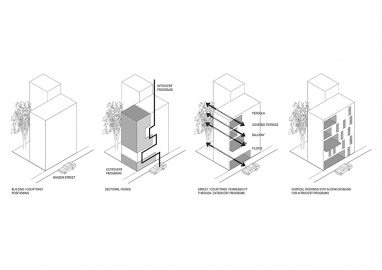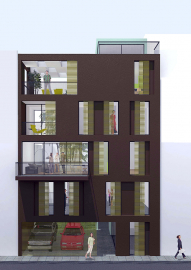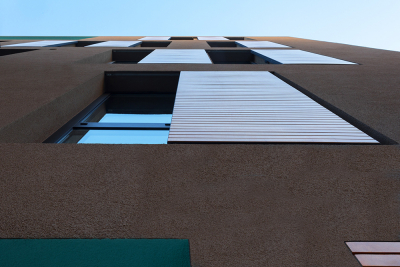Hansen, Mixed Use Building in Athens
This project redefines the mixed-use housing typology of the "polykatoikia", ubiquitous in Greek cities, in one of the most dense urban neighborhoods of Athens' center, Patissia.
On a small urban plot of roughly 130 square meters, this five-storey, mixed-use building consists of three units of habitation: an office on the first two levels; a residential apartment on the third; and a three-storey "house" at the top. Its modest size and low budget are an exercise in intelligent planning, within the context of a disadvantaged neighborhood and broader economic crisis. The building's design defines its relation to public space as a paramount resource, driving the inventive redistribution of public and private programs, the modulation of depth and transparency along the facade, and the design of exterior spaces as an extension of the realm of the street. The end result is a more horizontal than vertical reading of the city, where dense urban infill coincides with connectivity and permeable movement.
An L-shaped plan is dictated by site orientation and adjacent building mass, creating a small garden to the South. The vertical arrangement of different programs, typically integrated behind a uniform facade of duplicate floors, is articulated here as a "sectional" facade: individual floor levels appear to extend different lengths along the street, varying the relationship of closed to open space at each floor. Along the street, the mass of the building is lifted to provide broad visual access to the private garden, and allow room for two vehicles. At each level of the building, an exterior or transparent space "bridges" the street to the backyard along the West party line, whereas the most sheltered interior spaces are concentrated along the opposite party line. This results in a double strategy. On the one hand, the careful manipulation of the building code incorporates a pilotis, a pergola and covered outdoor spaces, creating a porous civic facade that subverts the requirement for the building's mass to continue that of its neighbors. On the other hand, the near-absence of protruding balconies brings the building's interior closer to the realm of the street.
Standard construction and everyday materials are made elegant through design. A reinforced concrete frame with brick infill is dressed in 6 to 7 cm exterior insulation for maximum energy savings. Sliding screens of birch plywood offer material economy, even as their movement activates the street facade. Operable windows and the integration of exterior spaces into the building's L-shaped plan maximize cross-ventilation and natural daylight at every level. Large window openings onto the South-facing garden are shaded by a tall, deciduous tree in summer (Sophora japonica), while the loss of leaves in the winter allows apartments to benefit from solar gain. Design decisions, such as rendering the garden, pilotis and street front as a continuum, activate outdoor spaces that are normally treated as residual, thus offering a paradigm of urban sustainability. The building's turquoise color highlights exterior spaces and recalls two local references: the widespread Athenian tendency among older buildings to paint the underside of balconies in decorative hues; and the ubiquitous colorful fabric awnings that add to the city's lively appearance.

